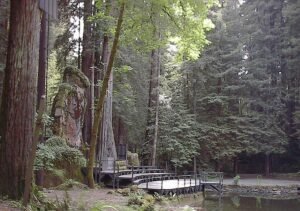On September 16, 1994, an extraordinary event unfolded at Ariel School in Ruwa, Zimbabwe. Over 60 schoolchildren reported seeing a UFO land near their playground during recess. The children described encountering small humanoid beings with large eyes, sparking widespread interest and debate about extraterrestrial visitation.
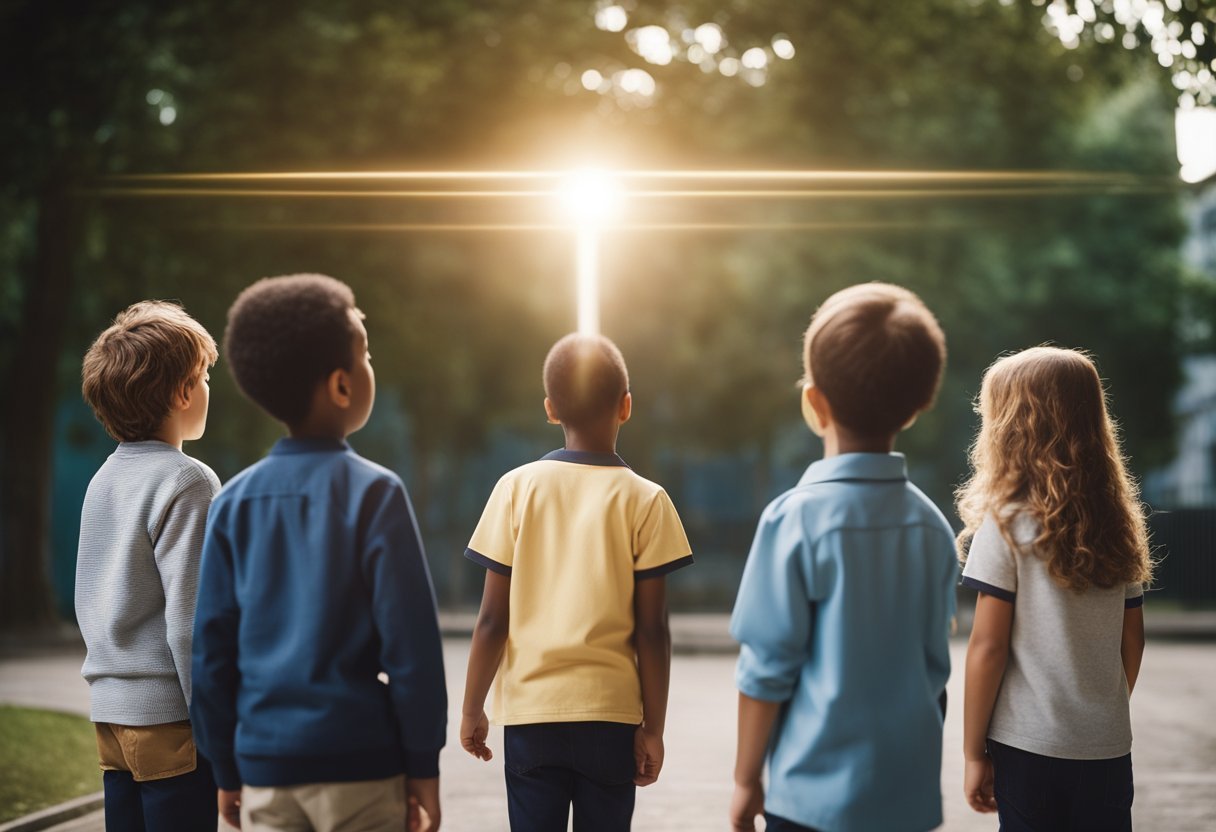
The incident gained international attention due to the large number of consistent eyewitness accounts from young children. Researchers and UFO investigators traveled to Zimbabwe to interview the students and staff. The children’s detailed drawings and unwavering testimonies over the years have made this one of the most compelling mass UFO sightings on record.
While skeptics propose alternative explanations like mass hysteria or misidentification, the Ariel School incident remains a fascinating case study in UFO encounters. The event continues to captivate the public imagination and raise questions about the possibility of extraterrestrial contact.
Key Takeaways
- Over 60 schoolchildren in Zimbabwe reported seeing a UFO and alien beings in 1994.
- The incident gained global attention and sparked extensive investigations by researchers.
- The Ariel School case remains one of the most compelling mass UFO sightings on record.
Chronology of Events
The Ariel School incident unfolded on September 16, 1994, in Ruwa, Zimbabwe. Over 60 schoolchildren reported seeing UFOs and alien beings, marking one of the most significant mass sightings in ufology.
Initial Sightings and Descriptions
At approximately 10:15 AM, students on their mid-morning break first noticed unusual objects in the sky. They described seeing multiple silver crafts descending from above. The objects were reported to have a disc-like shape with a bright light emanating from them.
Several children claimed the crafts landed or hovered very close to the ground near the school. The sighting lasted for about 15 minutes, during which time the students observed the craft’s movements with a mix of curiosity and fear.
Some witnesses reported seeing smaller objects separate from the larger craft, describing them as “scout ships” investigating the area.
The Playground Encounter
As the UFOs approached the school grounds, several students reported seeing beings emerge from the craft. These entities were described as approximately 3 feet tall with large black eyes, slender bodies, and long thin arms.
The beings allegedly moved in a strange manner, described by some as “bouncing” or floating. Several children claimed to have made eye contact with these beings, reporting a sense of communication or telepathic message exchange.
Some students said they received mental images or thoughts about environmental destruction and the dangers of technology. The encounter reportedly lasted only a few minutes before the beings retreated to their craft and departed.
Post-Encounter Reactions
Immediately following the event, many children were visibly shaken and upset. School officials were initially skeptical of the children’s accounts but became concerned by the consistency and sincerity of their stories.
Local authorities were notified, and news of the incident spread quickly. Within days, researchers and UFO investigators arrived in Ruwa to interview the witnesses and document their experiences.
Many children drew pictures of what they had seen, producing remarkably similar depictions of the craft and beings. Psychological evaluations were conducted, finding no evidence of mass hysteria or fabrication.
The incident gained international attention, featured in documentaries and extensively studied by ufologists. Decades later, many witnesses maintain the authenticity of their experiences, making the Ariel School incident a compelling case in UFO history.
Investigations and Research
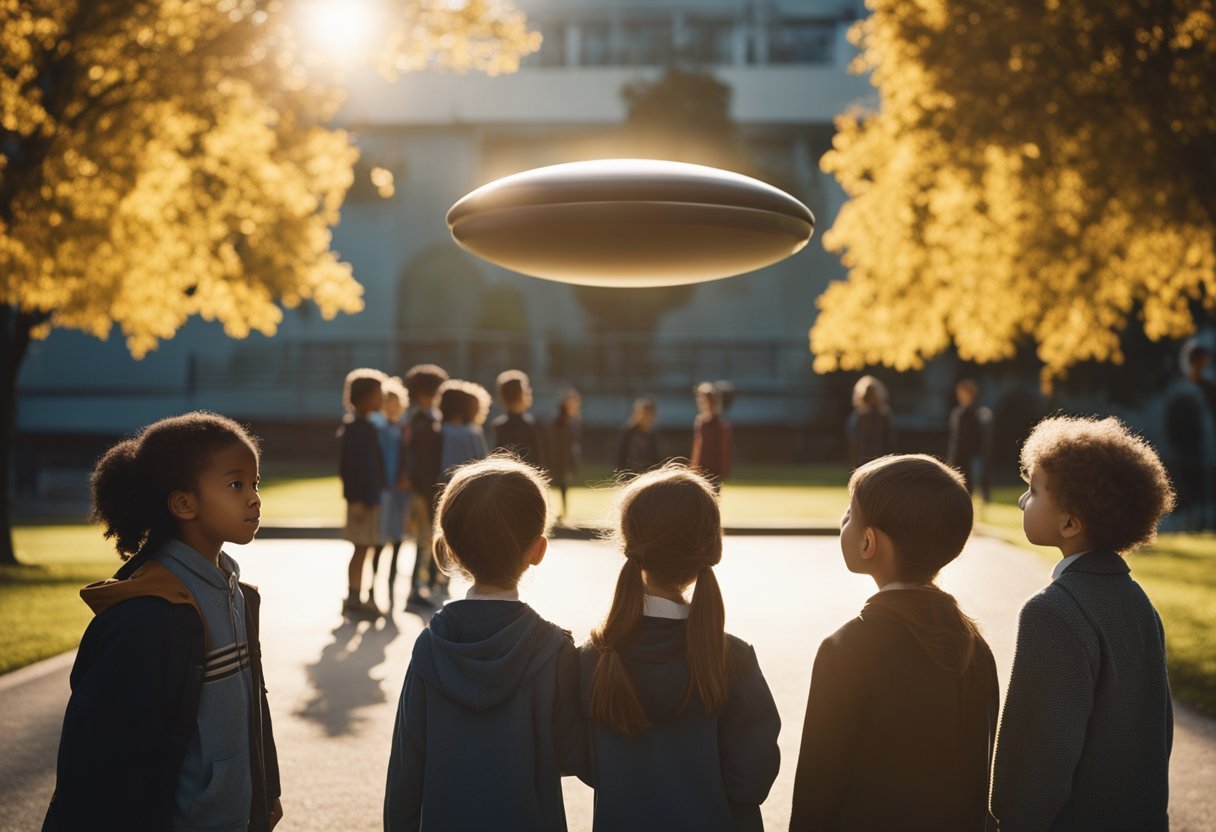
The Ariel School incident attracted attention from researchers and media outlets. Several key figures conducted field work and psychological studies to understand the children’s experiences. Scientific interest grew as investigators examined the case.
Cynthia Hind’s Field Work
Cynthia Hind, a prominent Zimbabwean UFO researcher, visited Ariel School shortly after the incident occurred. She interviewed numerous children and staff members, collecting detailed accounts of the UFO sighting and alleged alien encounter.
Hind documented consistent descriptions from the children about the craft’s appearance and the beings they claimed to have seen. Her field work provided valuable early documentation of the event.
Hind’s investigation helped bring wider attention to the case. She published her findings in UFO publications and worked to spread awareness of the Ariel School incident.
John Mack’s Psychological Study
Dr. John Mack, a professor of psychiatry at Harvard University, traveled to Zimbabwe to conduct an in-depth psychological study of the Ariel School children. He interviewed dozens of students, using hypnosis and other techniques to explore their memories.
Mack’s research aimed to understand the psychological impact of the event. He found the children’s accounts to be remarkably consistent and believed they had experienced a genuine anomalous event.
His involvement lent academic credibility to the case. Mack’s work on the Ariel School incident became part of his broader research into alleged alien encounters.
Media and Scientific Interest
The Ariel School incident garnered significant media coverage in Zimbabwe and internationally. News outlets ran stories featuring interviews with the children and staff.
Documentary filmmakers visited the school to capture testimony on camera. These visual records preserve first-hand accounts from shortly after the event occurred.
Some scientists expressed interest in studying the case further. However, the incident remains controversial in scientific circles due to the extraordinary nature of the claims.
Skeptics have proposed alternative explanations, such as mass hysteria or misidentification of conventional phenomena. The case continues to spark debate among UFO researchers and skeptics alike.
Eyewitness Accounts
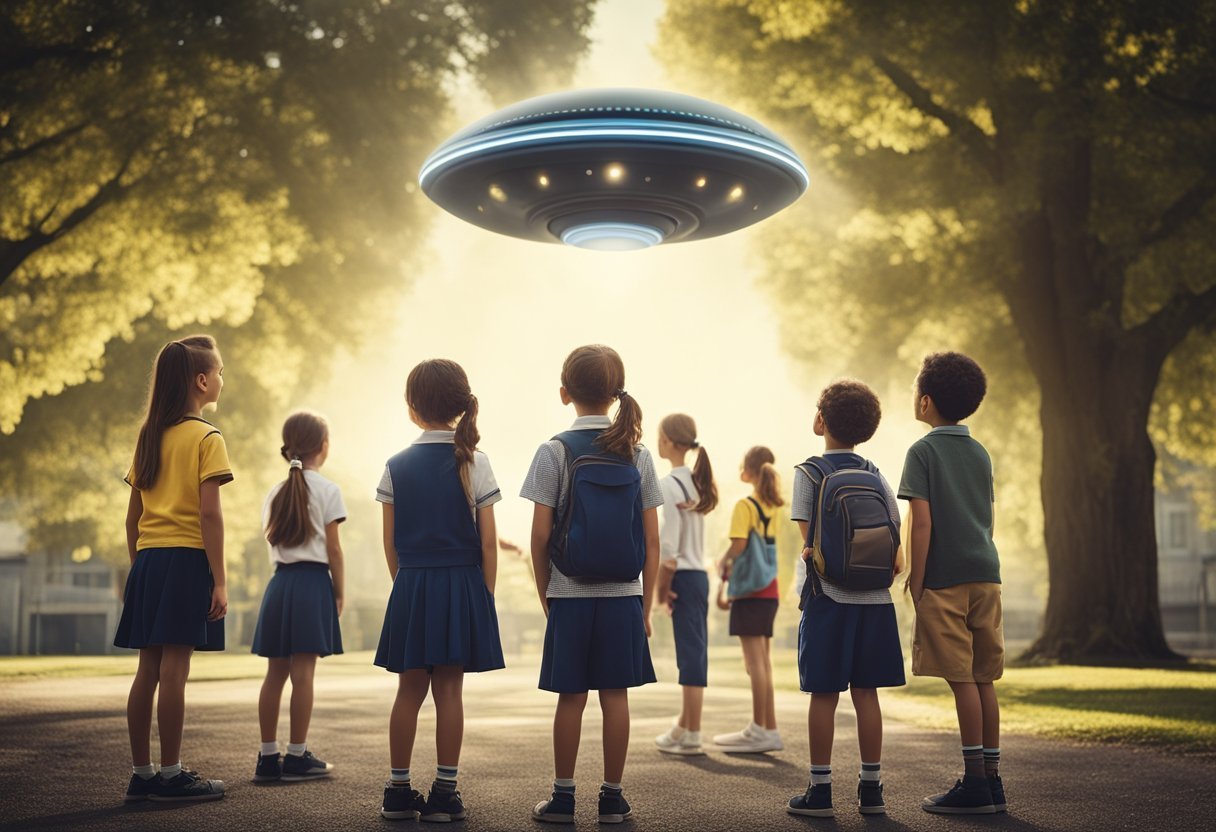
The Ariel School incident is notable for the number and consistency of eyewitness accounts. Children provided detailed testimonies of their alleged alien encounter, with many maintaining their stories over time.
Children’s Testimonies
On September 16, 1994, over 60 students at Ariel School in Ruwa, Zimbabwe reported seeing UFOs and alien beings during their morning break. The children, aged between 5 and 12, described seeing multiple silver craft landing in a nearby field. They reported observing small humanoid figures with large eyes, described as “aliens” by many witnesses.
Several students claimed to have experienced telepathic communication with these beings. The messages reportedly focused on environmental concerns and the dangers of human technology. Many children produced drawings of what they saw, showing remarkable similarities in the depictions of both the craft and entities.
Consistency Over Time
A key aspect of the Ariel School incident is the consistency of the children’s accounts over the years. Researchers and investigators have conducted follow-up interviews with many of the witnesses, some occurring decades after the event. Remarkably, the core elements of their stories have remained largely unchanged.
Many witnesses, now adults, continue to stand by their childhood experiences. They report that the event had a profound impact on their lives, with some describing feelings of trauma or a sense of mission related to the messages they claim to have received. This long-term consistency has intrigued researchers and added weight to the incident’s significance in UFO studies.
Societal Impact and Responses
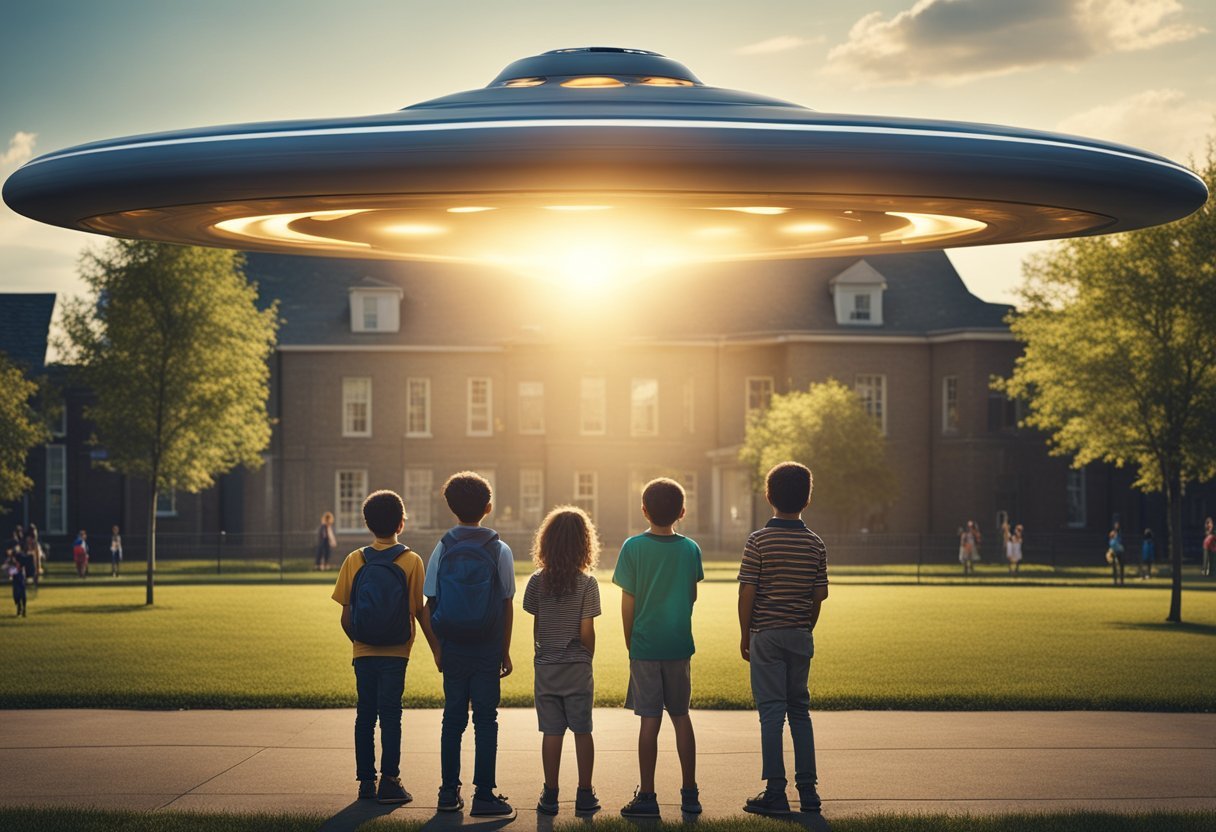
The Ariel School incident generated significant local and international attention, influencing UFO culture and sparking debates about extraterrestrial encounters. It left a lasting impact on the community and UFO researchers worldwide.
Local Reaction and Coverage
In Zimbabwe, the Ariel School incident caused a stir among local residents. ZBC Radio covered the story extensively, interviewing students and teachers involved. Many Zimbabweans were fascinated by the children’s accounts, leading to increased discussion about UFOs and extraterrestrial life.
The event divided public opinion. Some believed the children’s stories, while others dismissed them as mass hysteria or a hoax. Local authorities conducted initial investigations but found no physical evidence to support the claims.
Schools in the area incorporated the incident into their curriculum, using it to teach critical thinking and scientific inquiry. This approach helped students analyze extraordinary claims objectively.
International Interest
News of the Ariel School incident quickly spread beyond Zimbabwe’s borders. International media outlets picked up the story, bringing it to a global audience. UFO researchers from various countries traveled to Harare to investigate the claims firsthand.
The incident attracted attention from prominent ufologists and skeptics alike. Some saw it as compelling evidence of extraterrestrial contact, while others sought alternative explanations.
Academic institutions showed interest in studying the psychological aspects of the event. Researchers examined group dynamics and the potential for shared experiences to shape collective beliefs.
Influence on UFO Culture
The Ariel School incident became a significant event in UFO history. It reinforced beliefs among UFO enthusiasts and challenged skeptics to reconsider their positions.
UFO Mania, a popular website and forum, frequently references the incident as one of the most compelling mass sightings. The case is often cited in discussions about:
- Child witnesses in UFO encounters
- Mass sightings and their credibility
- Potential motives for extraterrestrial contact
The incident inspired books, documentaries, and ongoing research. It continues to be debated in UFO circles, with new analyses and interpretations emerging decades after the event.
Ariel School’s experience has become a touchstone for discussions about the intersection of UFO phenomena and society. It raises questions about how communities process and integrate extraordinary events into their cultural narratives.
Alternative Explanations
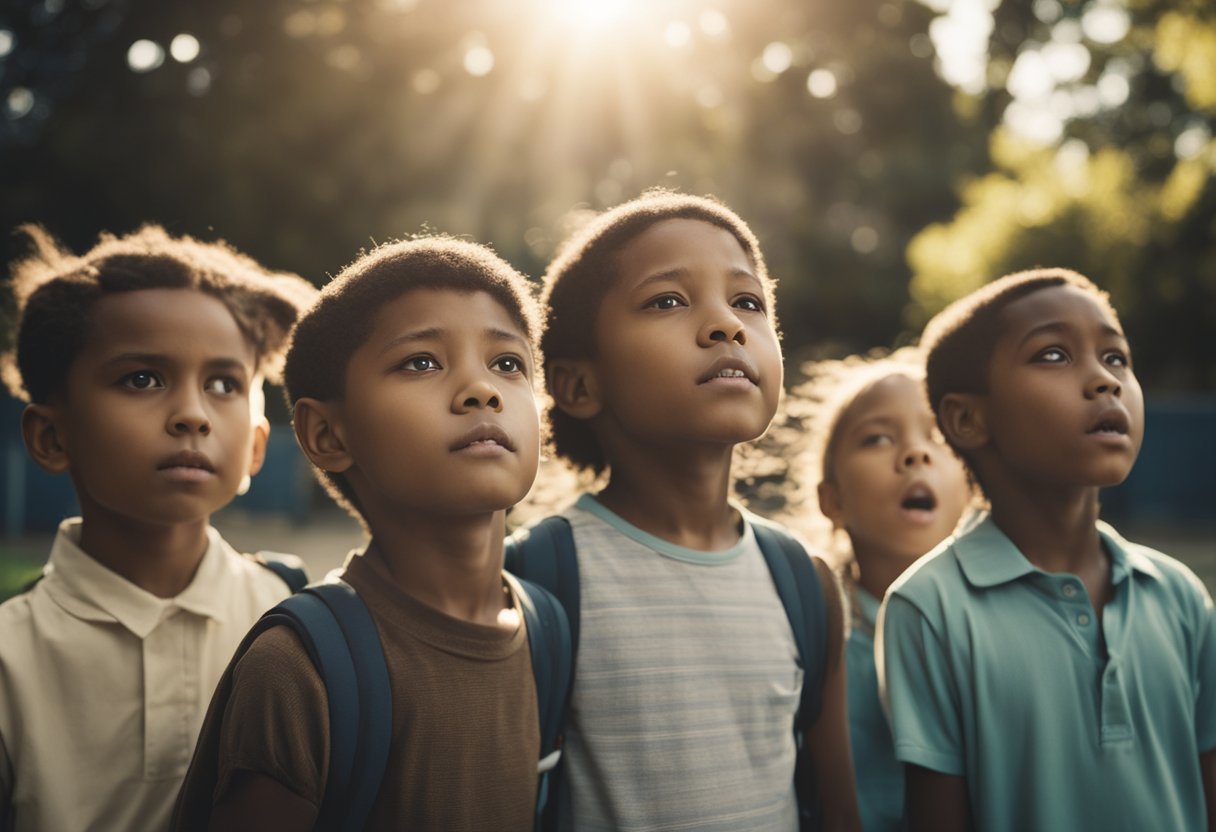
Several theories attempt to explain the Ariel School incident without invoking extraterrestrial encounters. These range from misidentified aerospace objects to psychological and cultural factors.
Zenit-2 Rocket Theory
Some researchers propose the children may have witnessed a Zenit-2 rocket re-entering Earth’s atmosphere. Zenit-2 rockets were used for satellite launches and could appear as bright fireballs during re-entry. This explanation suggests the rocket’s breakup created multiple glowing objects in the sky.
The timing of known Zenit-2 launches aligns with the Ariel School incident date. Rocket debris falling to Earth could account for reported landing impressions. Critics argue this theory doesn’t explain the humanoid figures described by witnesses.
Cosmos 2290 Satellite Debris
Another aerospace-related explanation involves debris from the Cosmos 2290 satellite. This Soviet reconnaissance satellite was known to have decayed in Earth’s atmosphere around the time of the incident.
Satellite fragments can produce spectacular light shows as they burn up. Multiple pieces could create the impression of coordinated movement. This theory faces similar challenges as the Zenit-2 hypothesis in accounting for reported beings on the ground.
Folklore and Psychology
Some experts suggest psychological and cultural factors played a role in shaping the children’s experiences. Local folklore about mythical creatures or spirits may have influenced interpretations of unusual phenomena.
Mass hysteria is proposed as a potential factor, where witness accounts reinforce and shape each other’s memories. The stressful social context of post-apartheid Zimbabwe could have heightened suggestibility.
Critics of this view argue the consistency of reports and physical evidence are difficult to explain through psychology alone. The long-term impact on witnesses also challenges simple psychological explanations.
Cinematic Representation
The Ariel School incident has captured the attention of filmmakers, leading to compelling documentaries that explore this mass alien encounter. These films aim to present the events through interviews and reenactments, offering viewers a closer look at the extraordinary claims made by the schoolchildren.
The ‘Ariel Phenomenon’ Documentary
The ‘Ariel Phenomenon’ documentary directed by Randall Nickerson offers an in-depth examination of the Ariel School incident. Nickerson spent years investigating the event, interviewing witnesses, and compiling footage.
The film features interviews with the now-adult witnesses, providing their current perspectives on their childhood experiences. It also includes archival footage and reenactments to help visualize the children’s accounts.
Dallyn Vico contributed to the documentary’s production, adding valuable insights to the project.
Portrayal of Real Events
Cinematic representations of the Ariel School incident strive to balance factual reporting with engaging storytelling. Filmmakers face the challenge of presenting extraordinary claims while maintaining credibility.
These documentaries often include expert analyses and skeptical viewpoints to provide a balanced perspective. They use visual effects to recreate the described UFO and alien beings, based on witness testimonies.
The films also explore the impact of the incident on the witnesses’ lives and the broader implications for our understanding of extraterrestrial phenomena.
Legacy and Significance
The Ariel School incident continues to captivate public interest and holds a unique place in UFO history. Its impact extends beyond the initial event, shaping discussions around close encounters and their potential meanings.
Ongoing Public Fascination
The Ariel School phenomenon remains a subject of intense curiosity decades after it occurred. Documentaries, books, and articles continue to explore the incident, keeping it in the public eye. The mass nature of the encounter, involving multiple child witnesses, adds to its enduring appeal.
Researchers and UFO enthusiasts regularly revisit the case, conducting follow-up interviews with the now-adult witnesses. Many of these individuals maintain consistent accounts of their experiences, fueling ongoing debates about the nature of the event.
The incident’s environmental message, reported by several witnesses, resonates with contemporary concerns about ecological preservation. This aspect of the encounter contributes to its continued relevance in public discourse.
Role in UFO History
The Ariel School incident occupies a significant place in UFO history. It stands out as one of the most well-documented cases of a Close Encounter of the Third Kind involving multiple witnesses. The event’s occurrence in a school setting, with numerous child observers, sets it apart from many other reported alien encounters.
UFO researchers often cite the incident as compelling evidence due to the consistency of witness accounts and the detailed descriptions provided by the children. The case has influenced UFO investigation methodologies, emphasizing the importance of immediate and thorough documentation of mass sighting events.
The incident’s legacy extends to international UFO research, inspiring similar investigations in other countries. It continues to be a benchmark against which other mass sightings are compared.
Frequently Asked Questions
The Ariel School incident in Zimbabwe remains one of the most intriguing mass UFO sightings reported by schoolchildren. Numerous witnesses provided detailed accounts, and the event has been extensively studied by UFO researchers.
What are the witness accounts of the Ariel School Incident in Ruwa, Zimbabwe?
On September 16, 1994, over 60 students at Ariel School reported seeing UFOs and alien beings during their morning break. The children, aged between 5 and 12, described seeing silver craft land in a nearby field.
They reported observing small humanoid figures with large dark eyes emerge from the craft. Many students claimed the beings communicated telepathically, warning about environmental destruction.
How did the Ariel School UFO event affect the children who reported seeing it?
The incident had a profound impact on many of the children involved. Some reported feeling scared or confused immediately after the event.
Years later, many witnesses maintained their accounts of what they saw. Some expressed ongoing interest in UFOs and extraterrestrial life as adults.
What evidence exists regarding the UFO sighting at Ariel Primary School?
Physical evidence from the Ariel School incident is limited. No photographs or videos of the alleged craft or beings exist.
The primary evidence consists of witness testimonies and drawings made by the children shortly after the event. These drawings show remarkable consistency in depicting the craft and beings.
How has the Ariel School Incident been documented or investigated by researchers?
Several UFO researchers have investigated the Ariel School incident. Dr. John Mack, a Harvard psychiatrist, interviewed many of the children soon after the event.
Filmmaker Randall Nickerson spent years documenting the case, interviewing witnesses as adults for his film “Ariel Phenomenon.”
In what ways did the Ariel School encounter contribute to UFO study and folklore?
The Ariel School incident became a significant case study in ufology due to the large number of witnesses and their young age. It challenged skeptics to explain how so many children could share such similar, detailed accounts.
The event also contributed to discussions about potential messages from extraterrestrial beings regarding environmental concerns.
What similarities does the Ariel School event share with other well-known UFO sightings?
The Ariel School incident shares some similarities with other mass UFO sightings, such as the 1966 Westall High School incident in Australia.
Both cases involved multiple young witnesses at a school, descriptions of landed craft, and humanoid beings. The Ariel case also echoes other reports of telepathic communication from alleged extraterrestrials.


